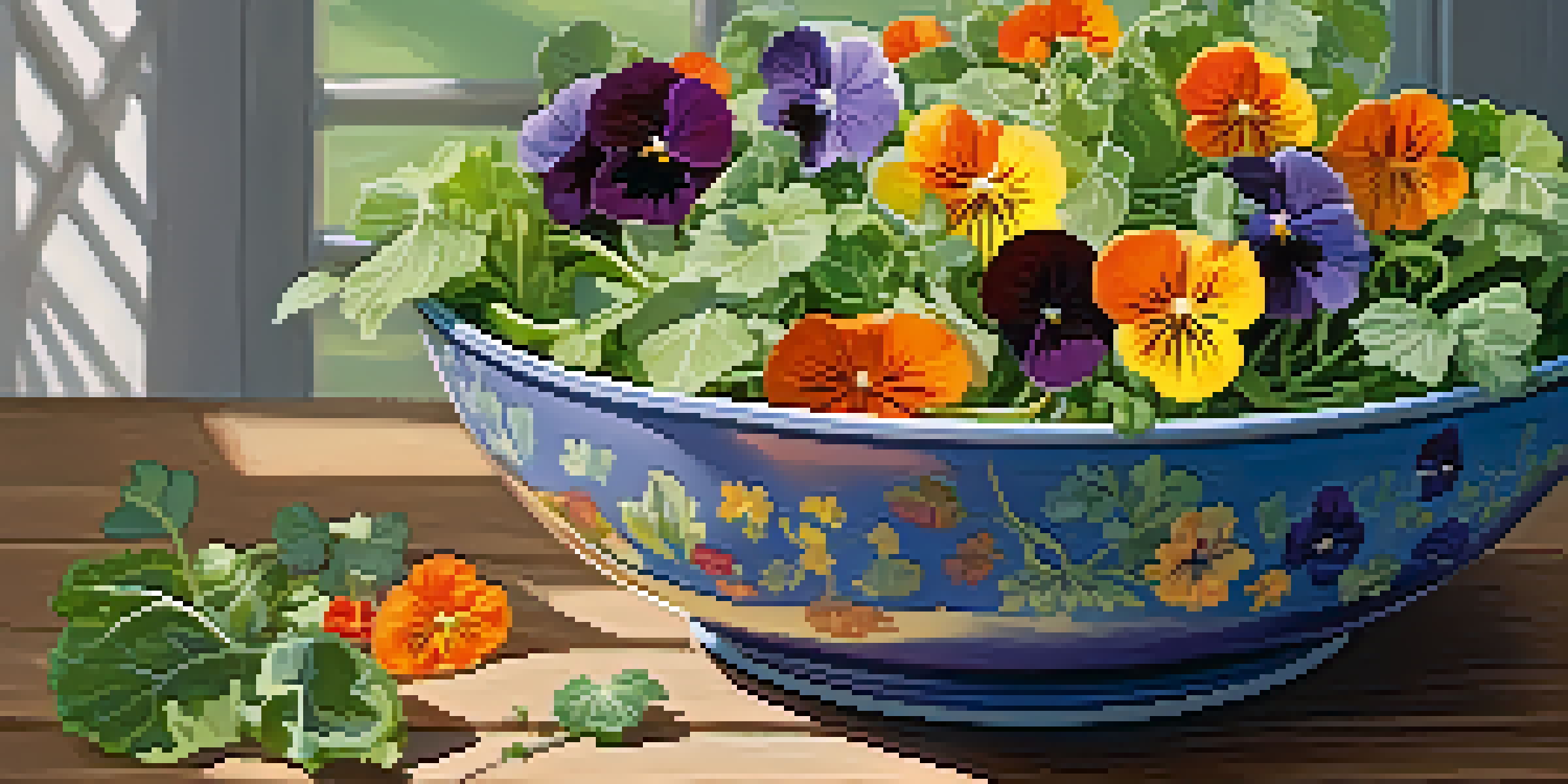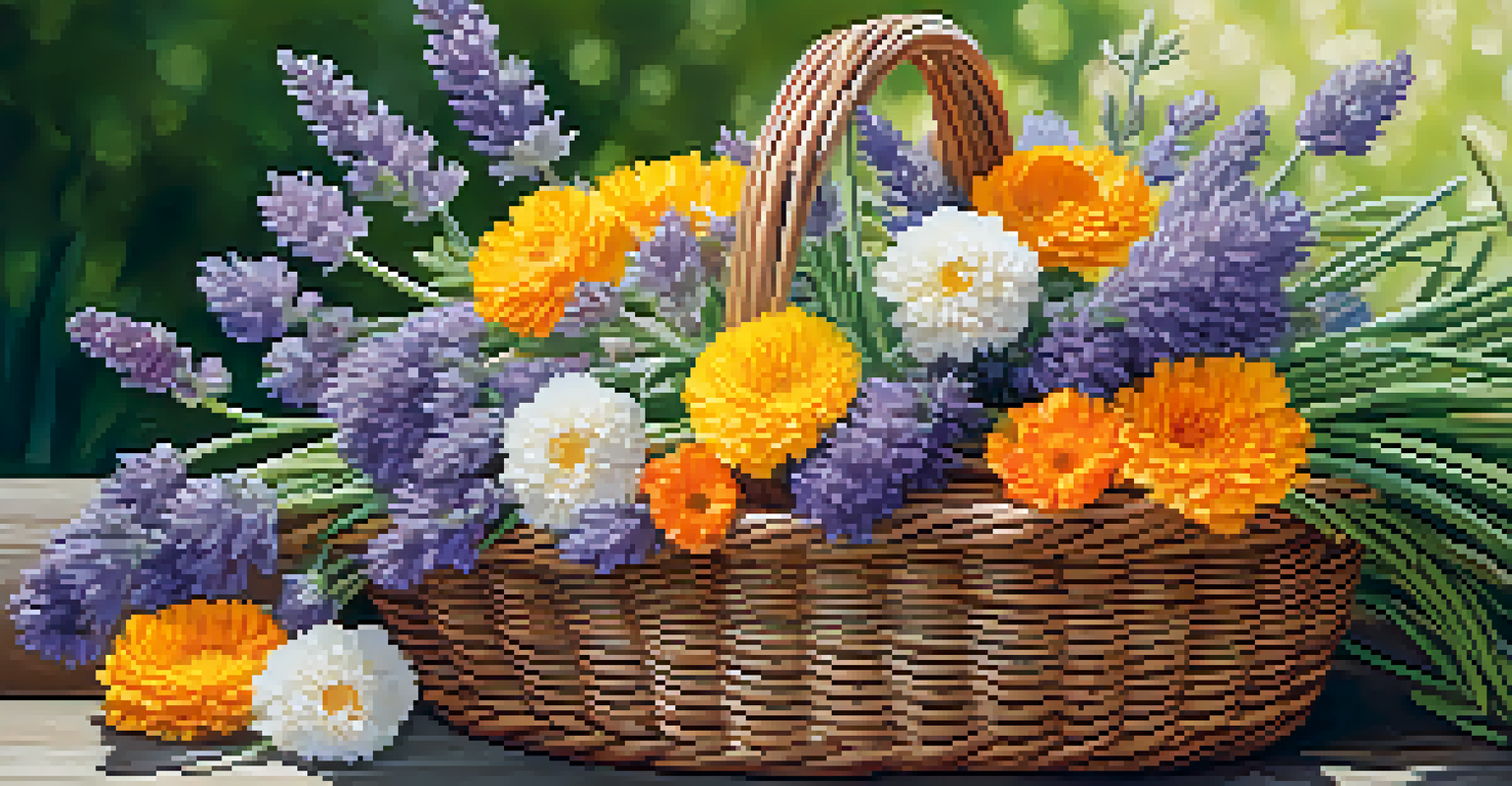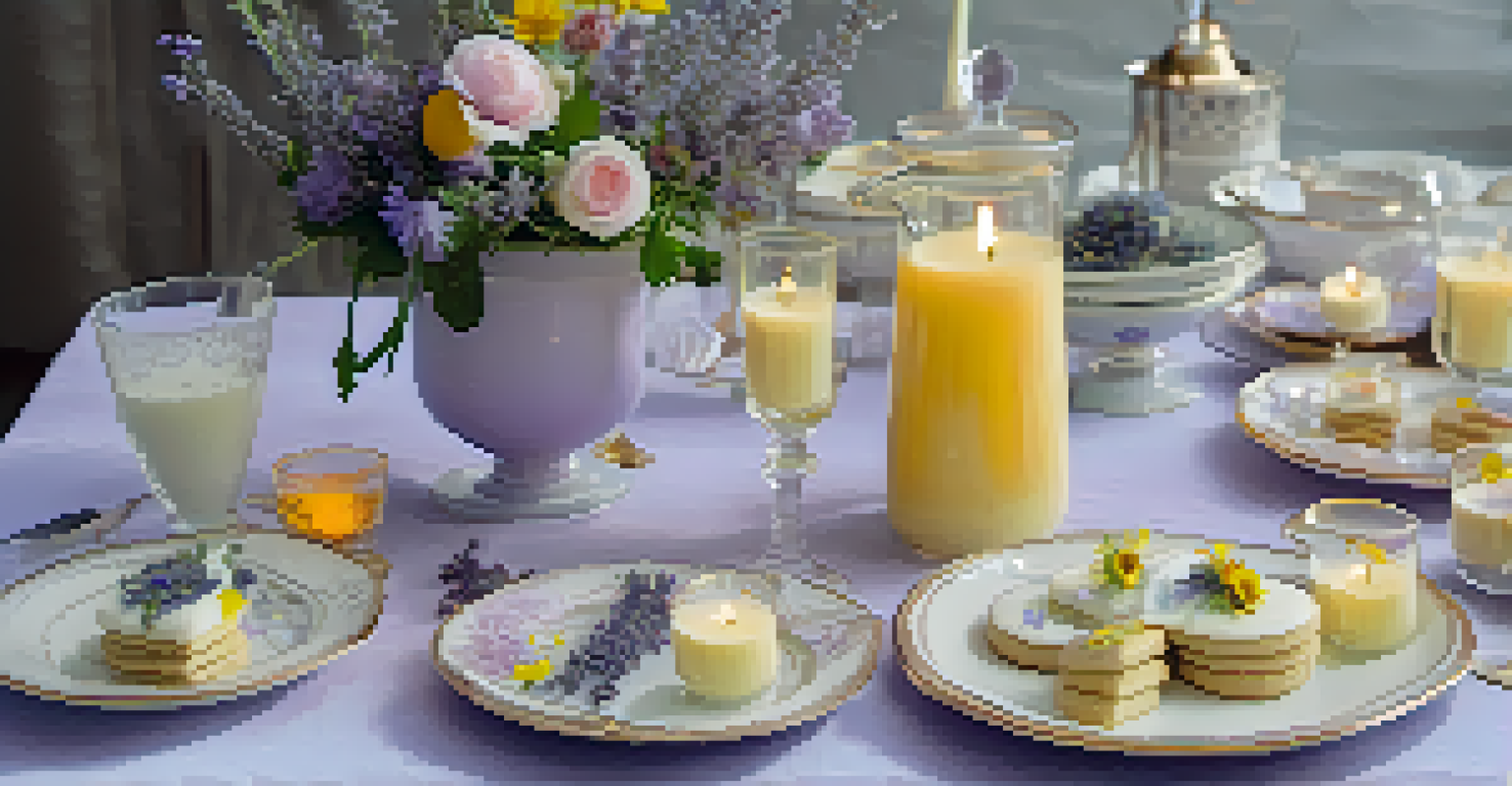Edible Flowers: A Vegetarian's Secret Ingredient

What Are Edible Flowers and Why Use Them?
Edible flowers are not just pretty garnishes; they add flavor, color, and texture to your dishes. Think of them as the secret weapon in a vegetarian's kitchen. From vibrant nasturtiums to sweet violets, these blooms can transform a simple salad into a culinary masterpiece.
Edible flowers are the hidden gems of the culinary world, adding color and flavor to dishes that can elevate them from ordinary to extraordinary.
Using edible flowers can elevate your meals, making them visually stunning and delicious. They offer unique flavors, like the peppery bite of arugula flowers or the subtle sweetness of chamomile. By incorporating these flowers, you can surprise your taste buds and impress your guests with your creativity.
Moreover, edible flowers are packed with nutrients and antioxidants, enhancing the health benefits of your meals. As you explore the world of edible blooms, you'll find that they can turn ordinary dishes into extraordinary experiences.
Popular Edible Flowers to Try
When it comes to edible flowers, variety is the spice of life. Some popular options include nasturtiums, which have a peppery flavor, and pansies, known for their mild, sweet taste. Calendula petals add vibrant color and a hint of spice, making them perfect for salads.

Other favorites include lavender, which can infuse a lovely aroma into desserts, and chive flowers, offering a mild onion flavor. Each flower brings its own unique taste and aesthetic appeal, allowing you to experiment and find your favorites.
Edible Flowers Enhance Dishes
Edible flowers not only add visual appeal but also unique flavors and textures to your meals.
Don't forget about roses! They can add romance and sweetness to dishes, and their fragrant petals are perfect for syrups and jams. With so many options, the possibilities are endless for adding these beautiful blooms to your vegetarian meals.
How to Safely Harvest Edible Flowers
If you're feeling adventurous, you might want to try harvesting your own edible flowers. However, it's crucial to ensure that the flowers are safe to eat. Always do your research and identify the flowers correctly before consuming them, as some can be toxic.
Cooking is like love. It should be entered into with abandon or not at all. And edible flowers bring that love and creativity to the table.
When harvesting, choose flowers that are free from pesticides and chemicals. It's a good idea to pick them early in the day when they're at their freshest, and avoid flowers that are wilting or have started to lose their color. Remember, the more vibrant the flower, the better it will taste!
Once you've harvested your flowers, rinse them gently in cool water to remove any dirt or insects. Pat them dry with a paper towel, and they're ready to be used in your culinary creations. With proper care, you can enjoy a beautiful bouquet of flavors right from your garden.
Incorporating Edible Flowers into Your Cooking
Now that you have some edible flowers in hand, how do you use them? One simple way is to toss them into salads for a splash of color and flavor. They can also be used as a garnish for soups or main dishes, adding a touch of elegance to your presentation.
Consider using edible flowers in beverages as well. Lavender can be steeped in teas or used to flavor lemonade, while hibiscus flowers can create a refreshing iced tea. These floral infusions not only taste great but also make for beautiful drinks that will wow your guests.
Health Benefits of Edible Flowers
Many edible flowers are rich in vitamins and antioxidants, contributing to a healthier diet.
Don't forget about desserts! Edible flowers can be candied or used fresh to decorate cakes, cupcakes, and pastries. A sprinkle of colorful blooms can turn a simple dessert into a celebration, making every bite a feast for the senses.
Creative Recipes Featuring Edible Flowers
Looking for inspiration? Try making a vibrant salad with mixed greens, edible flowers, and a light vinaigrette. The combination of textures and flavors will make your salad not only delicious but also a feast for the eyes.
Another fun idea is to create flower-infused oils or vinegars. Simply steep your chosen edible flowers in olive oil or vinegar for a few days, and you’ll have a unique ingredient to elevate your dishes. Use them to dress salads, drizzle over grilled vegetables, or add to marinades.
For dessert lovers, consider making lavender shortbread cookies or a chamomile-infused panna cotta. These treats will leave your guests raving about the lovely flavors and delightful presentation. The key is to let your creativity bloom!
The Health Benefits of Edible Flowers
Beyond their beauty and flavor, edible flowers come with numerous health benefits. Many blooms are rich in vitamins, minerals, and antioxidants, supporting overall health and wellness. For instance, nasturtiums are high in vitamin C, while calendula is known for its anti-inflammatory properties.
Incorporating these flowers into your meals can help boost your immune system and provide additional nutrients to your diet. Plus, adding colorful, natural ingredients can make your meals more visually appealing, which can enhance your overall dining experience.
Sourcing Edible Flowers Easily
You can find fresh edible flowers at grocery stores, farmer's markets, or even grow your own for culinary use.
So not only do edible flowers make your dishes pop, but they can also contribute to a healthier lifestyle. Next time you're preparing a meal, consider how these blooms can play a role in both nutrition and flavor.
Sourcing Edible Flowers for Your Kitchen
If you're not ready to grow your own edible flowers, don't worry! Many grocery stores and farmer's markets now carry a selection of fresh edible blooms. Look for organic options to ensure they are free from harmful chemicals and pesticides.
You can also find edible flowers at specialty stores or online retailers that focus on gourmet ingredients. Just be sure to read the labels and verify that they are indeed safe for consumption.

Lastly, connecting with local farmers or joining a community garden can be a great way to source fresh, seasonal blooms. Not only will you support local agriculture, but you'll also gain access to unique varieties that can inspire your cooking!